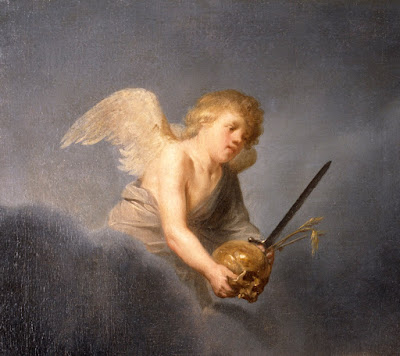 |
| Pieter de Grebber Musicians ca. 1620-23 oil on canvas Museo de Bellas Artes de Bilbao |
 |
| Pieter de Grebber Theodorus Schrevelius and his Family at Table 1625 oil on canvas Amsterdam Museum |
 |
| Pieter de Grebber Triumphal Procession 1648 oil on canvas Paleis Huis ten Bosch, The Hague |
 |
| Pieter de Grebber Triumphal Procession 1650 oil on canvas Paleis Huis ten Bosch, The Hague |
 |
| Pieter de Grebber Virgin and Child 1632 oil on canvas Museum Catharijneconvent, Utrecht |
 |
| Pieter de Grebber St John the Baptist preaching before Herod Antipas before 1652 oil on canvas Musée des Beaux-Arts de Lille |
 |
| Pieter de Grebber Adoration of the Shepherds 1633 oil on canvas Museum Catharijneconvent, Utrecht |
 |
| Pieter de Grebber Charity 1622 oil on canvas Museum of Fine Arts, Houston |
 |
| Pieter de Grebber King David in Prayer ca. 1635-39 oil on canvas Museum Catharijneconvent, Utrecht |
 |
| Pieter de Grebber King David in Prayer (detail) ca. 1635-39 oil on canvas Museum Catharijneconvent, Utrecht |
 |
| Pieter de Grebber Finding of Moses ca. 1632-34 oil on panel Leiden Collection, New York |
 |
| Pieter de Grebber Finding of Moses 1634 oil on canvas Gemäldegalerie Alte Meister, Dresden |
 |
| Pieter de Grebber Sacrifice of Isaac 1630 oil on canvas Slovak National Gallery, Bratislava |
 |
| Pieter de Grebber Laborer of Gibea offering hospitality to the Levite and his Concubine before 1652 oil on canvas private collection |
 |
| Pieter de Grebber Herodias mutilating the Head of St John the Baptist with Salome looking on ca. 1640-50 oil on canvas Wellcome Collection, London |
"Pieter de Grebber, who was devoutly Catholic and painted many religious images throughout his career, trained in Haarlem with Hendrick Goltzius soon after that master had begun to paint in a classicizing style. De Grebber followed this approach and looked for inspiration to the art of classical antiquity and the High Renaissance. He valued ideal forms and standards of beauty, and sought to articulate in word and image the underlying rules and principles of art. He published a broadside in 1648 entitled Rules which need to be observed and followed by a good draftsman and painter. Rule 3 declares that, "The main element of the story must be foregrounded in the most attractive part of the work," while Rule 7 reminds the artist that, "Care must be taken to ensure that the figures do not merely stand there, isolated from one another, but they must be connected with one another so that they come to life through their interaction."
– from a biographical sketch published by the Leiden Collection, New York